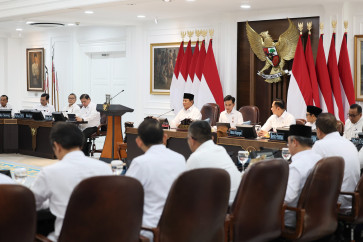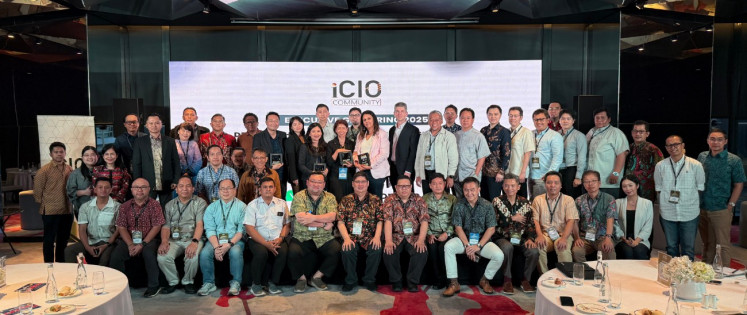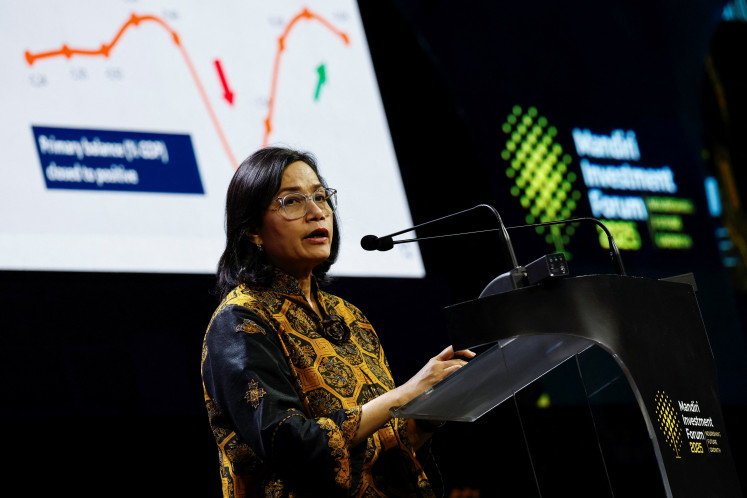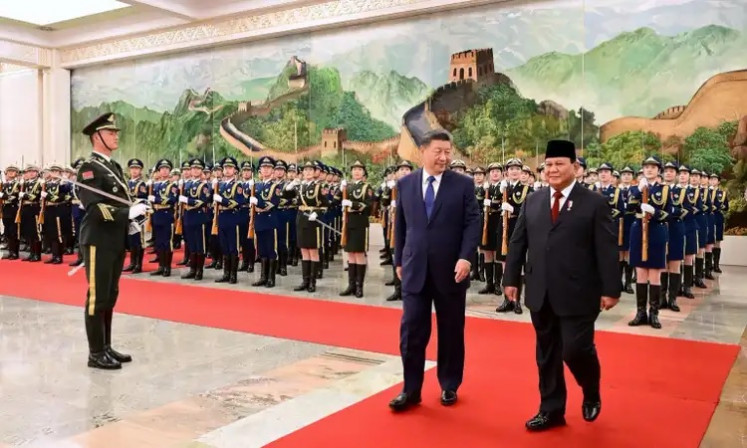Popular Reads
Top Results
Can't find what you're looking for?
View all search resultsPopular Reads
Top Results
Can't find what you're looking for?
View all search resultsHow to curb inflation using clustered rice fields
Bank Indonesia (BI) initiated the use of clustered volatile foods to increase the supply side in hopes of curbing inflation
Change text size
Gift Premium Articles
to Anyone
B
ank Indonesia (BI) initiated the use of clustered volatile foods to increase the supply side in hopes of curbing inflation. This method was also expected to improve farmers' welfare.
In 2007, a world food crisis marked staple food-price increases, such as that of rice, wheat and soybean on account of crop failures caused by weather anomalies in most countries that produced the aforementioned staple foods. The crisis triggered security and political instability in many countries.
This situation helped raised awareness among world leaders on how critical it was to maintain food supplies, marking the birth of the saying, 'Food security is national security'.
Realizing the importance of food security, the Indonesian government launched the 2010-2014 National Medium Term Development Plan (RJPMN), which focused on the means of intensifying food security, balancing food distribution, accelerating food diversification and supervising fresh-food supply security according to regional characteristics.
According to the RPJMN, accomplishing national food security is closely related to the endeavor of making domestic food affordable, which could increase people's welfare.
A stable food supply will maintain staple-food prices and thus help maintain a low-inflation rate.
BI helps curb inflation
As the monetary authority and also the country's central bank, BI has an obligation to maintain monetary stability, reflected in the stability of the rupiah's exchange rate and price for goods and services; which could also reflected by the inflation rate.
According to that mandate, BI needs to oversee the stability of staple-food prices. Besides formulating monetary regulations, it also works with the central and local governments through the central and regional Inflation Control Team (TPIP and TPID).
Other tangible steps to curb inflation from the supply side, besides maintaining the food supply, is by developing clustered food security based on regional prominent commodities. The purpose of this development is to identify the success of local government efforts in improving food security in their respective regions.
The success of the clustered model could be replicated in other regions. This will finally become a nationwide movement.
BI also developed at least six food clusters that were used in many regions. They included clustered crops such as rice, red onion and cayenne pepper, as well as clustered livestock commodities such as cow, broilers and freshwater fish. Focusing on rice, there are two methods used as an example: System of Rice Intensification (SRI) and Jajar Legowo.
Case study of SRI and Jajar Legowo
Though North Sumatra is known as a high-yield rice producer, average productivity for its rice crops is only 4.86 tons per square-hectometer (hm2); still lower than the national average output of 5.1 tons per hm2. The SRI method was later implemented there with the help of BI Representative Office Region IX in North Sumatra and Aceh.
Two farmers' groups were chosen in Sedang Bedagai district to apply the SRI method on their land, a total of 20 hm2.
In the first harvest alone, the crops rose to 9.38 tons per hm2 from the 8.04 tons per hm2 achieved previously.
The success story spread like wildfire and, until the end of 2013, at least 70 farmers' groups implemented the SRI method.
The improvement in productivity resulted in the rise of farmers' incomes. Previously, farmers only received Rp 33.7 million (US$2,729) per hm2. Now, the number has increased 17 percent or at least Rp 39.4 million. Profits also increased 15 percent to Rp 31 million per year -- and that is only the profits for 1 hm2 of square fields.
In Southeast Sulawesi, farmers were asked to try the Jajar Legowo method. BI's representative office for the Southeast Sulawesi province trained farmers while working together with local offices of the Agriculture Ministry and other related institutions in Sigi province.
The result was also satisfying. Previously, farmers could only harvest 4.5-5 tons of milled rice per hm2, but after the Jajar Legowo method was implemented, the first harvest's output increased to 7 to 8 tons of dried paddy. In the second harvest, the result was even higher with 10 tons of milled rice.
These two examples prove that by using clustered rice fields, productivity can be increased. The rice supply can be secured and prices can be maintained, thereby helping BI repress the inflation rate.
This is solid proof that BI can help fix the supply side in addition to working on monetary policies.










